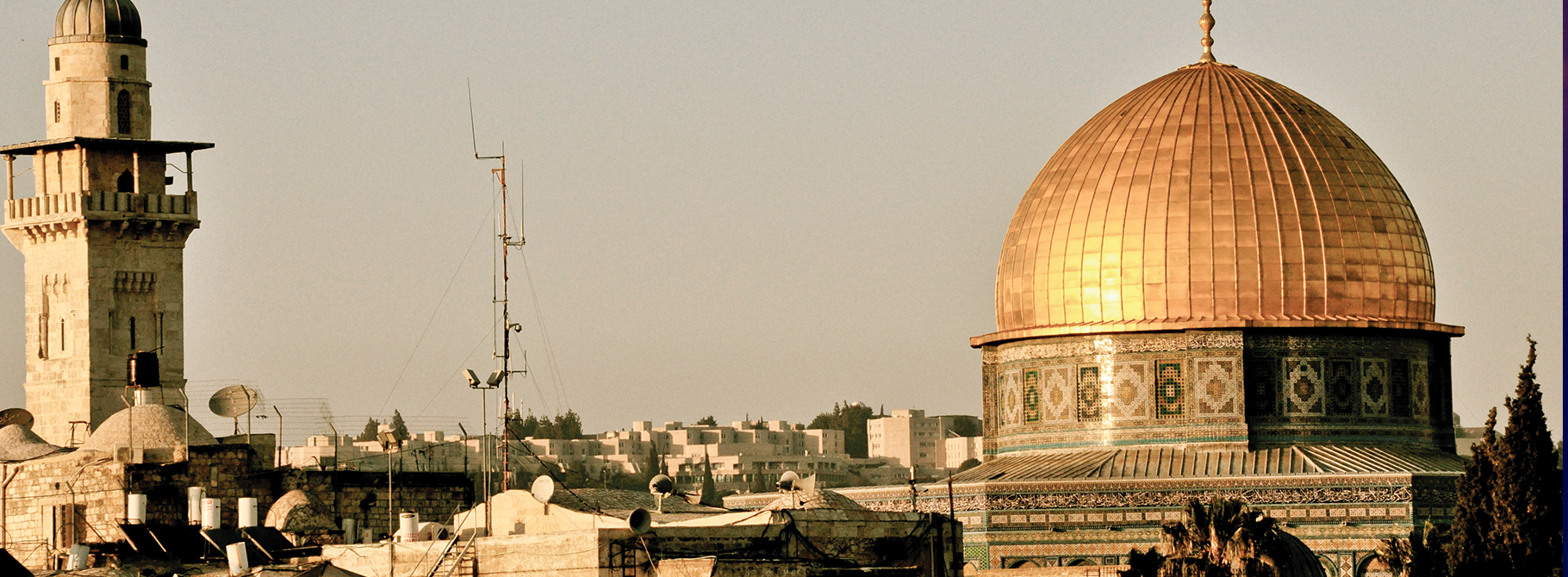Tel Aviv to Jerusalem
The beautiful and historical city of Jerusalem is located approximately 68km south east of the beach city of Tel Aviv.
Jerusalem is often referred to as “The Holy City” as it is particularly significant to 3 major religions – Judaism, Islam and Christianity. Jerusalem is dotted with ancient historical sites that are visited by thousands of tourists each year, combining a variety of architectural styles, places of prayer, cultures, religions, cuisines and offers a plethora of unique-to-the-city experiences. It is home to most government offices, the Knesset (Israeli parliament) and the UNESCO heritage site – the Old City of Jerusalem.
The Old City is divided into 4 distinct quarters, all with a fascinating history to them. The Christian Quarter, The Arab Quarter, The Jewish Quarter and The Armenian Quarter.
Although Tel Aviv is often referred to as Israel’s hi-tech capital and center of the young hipster nightlife scene, the vast majority of tourists to Israel visit the Holy City of Jerusalem when visiting Tel Aviv as it’s so close. There are a variety of travel options to get to Jerusalem from Tel Aviv.
If you are traveling by private car, it is advised to use a GPS system if possible, as like in all countries, there are areas that are less safe than others or that tourists are less welcome. However, a good old fashioned map can also do the trick printed from the internet, which will direct you onto the 1 highway, or the 443 road which will take you on a longer more scenic route.
For travellers using public transportation, there are several ways to travel from Tel Aviv to Jerusalem;
Using the regular Israel Railway train will allow you to enjoy a 1.5-hour long ride through a beautiful, scenic route through the Jordean Hills. The trains are very comfortable, and are characterized by the usually pleasant atmosphere (except on weekends when it can become extremely busy). THere are no trains on Friday evenings or Saturdays. And do take somehing warm on the train, the air conditioning is always set to very cold, due to the heat outside.
Recently, a new fast train line was launched, connecting the airport station to the Yitzchak Navon station in Jerusalem. The journey on this train is about 25 minutes and is more accessible than the regular train. However, it is important to check the train’s website, since it is still in its launch period, and may suffer irregularities and cancellations.
“Egged” public bus company operates several lines which connect Tel Aviv and Jerusalem, during most hours of the day. The 480 line leaves from the Central Train Station (Savidor) in North Tel Aviv, and the 405 connects the central bus stations of both cities. Both of these lines are quite frequent and travel on a direct route, with no stops. Traveling by bus will provide you with an authentic Israeli experience. If you’re on a tight schedule, remember that the early morning and late afternoon hours are characterized by heavy traffic and longer trip times.
Another convenient option is the Sherut cabs operating between the central bus stations of both cities. This is a shared minibus cab. Each cab can take up to 10 passengers, and the price (approx.. 300NIS) is split between everyone.
In the Old City of Jerusalem you will find the Western Wall in The Jewish Quarter – a remnant of the Holy Temple which was the center of early Jewish life. The Kotel Tunnels are outside the Temple Mount, and have become a fascinating tourist destination, providing a peek into the early layers of the city. City of David (Ir David) is another popular destination suitable for the entire family. This attraction features a unique trail (which can be accessible), taking visitors through ancient spots of Jerusalem. In addition, you will find an educational show about Jerusalem and the City of David. The David Citadel is the fort that protected Jerusalem in ancient times. You will find amazing archeological findings and two light shows telling the stories of Kind David and Jerusalem.
The Armon HaNatziv promenade and Har Hatzofim provide a panoramical view of the Old City, and the museum complex in Giv’at Ram is an educational gold mine.
Christian tourists enjoy visiting the Church of the Holy Sepulcher, which, according to tradition, holds Jesus’ burial cave, and a tour down Via Dolorsa – where he walked on his way to crucifixion .
Non-Jewish visitors are invited to Dome of the Rock and Al Aqsa mosque (which are currently closed for Jewish visitors), where Mohammad visited from Mecca, according to Islamic traditions.
Outside the old city, tourists and visitors can enjoy the renovated Mamilla boulevard, featuring restaurants and shopping venues, the Biblical Zoo, or walk around the old and quaint neighborhoods. A tour of the Mahane Yehuda market provides an exciting and authentic Israeli experience, with delightful tastes and sounds.
Nightlife in Jerusalem isn’t far behind Tel Aviv these days. You can enjoy great music and dancing at the Yellow Submarine, a wide range of bars and clubs, and cool karaoke rooms.
Jerusalem is great for any age and budget, so enjoy your trip!




 February 24, 2019
February 24, 2019